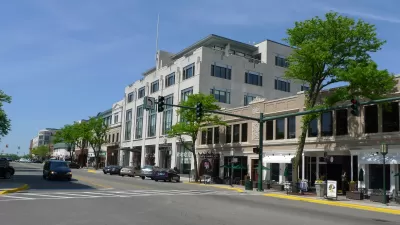The Congress for New Urbanism's Users' "Guide to Code Reform" leads planners through the code reform process, providing tools for governments lacking the capacity to develop a full form-based code.

Susan Henderson and Mathew Lambert write:
Increasingly, local governments want to align their zoning regulations with their goals for placemaking, incremental development, livability, and economic success. They realize conventional suburban standards have completely failed to solve for these issues; however, there are often gaps in political support, staff capacity, and budget to hire consultants for a major rewrite of their ordinances. The Congress for New Urbanism's Project for Code Reform is responding to that need.
More:
The Users’ Guide to Zoning Reform is designed for a broader constituency of local government staff, elected officials and planning consultants who work for municipalities who want guidance on practical ways to implement change. It is broken into two critical pieces—one which allows a local government to solve for discrete, specific problems, and the second which provides a set of basic zoning district templates for common walkable place types within the state. If a planning director is building the case for reform with their elected officials, the first tool is the initial step. The Guide offers background on zoning reform, instructions and process, and a series of code reform steps addressing streetscape, form, use, frontage, and parking.
FULL STORY: A New Path to Code Reform

Planetizen Federal Action Tracker
A weekly monitor of how Trump’s orders and actions are impacting planners and planning in America.

Restaurant Patios Were a Pandemic Win — Why Were They so Hard to Keep?
Social distancing requirements and changes in travel patterns prompted cities to pilot new uses for street and sidewalk space. Then it got complicated.

Map: Where Senate Republicans Want to Sell Your Public Lands
For public land advocates, the Senate Republicans’ proposal to sell millions of acres of public land in the West is “the biggest fight of their careers.”

Maui's Vacation Rental Debate Turns Ugly
Verbal attacks, misinformation campaigns and fistfights plague a high-stakes debate to convert thousands of vacation rentals into long-term housing.

San Francisco Suspends Traffic Calming Amidst Record Deaths
Citing “a challenging fiscal landscape,” the city will cease the program on the heels of 42 traffic deaths, including 24 pedestrians.

California Homeless Arrests, Citations Spike After Ruling
An investigation reveals that anti-homeless actions increased up to 500% after Grants Pass v. Johnson — even in cities claiming no policy change.
Urban Design for Planners 1: Software Tools
This six-course series explores essential urban design concepts using open source software and equips planners with the tools they need to participate fully in the urban design process.
Planning for Universal Design
Learn the tools for implementing Universal Design in planning regulations.
Heyer Gruel & Associates PA
JM Goldson LLC
Custer County Colorado
City of Camden Redevelopment Agency
City of Astoria
Transportation Research & Education Center (TREC) at Portland State University
Camden Redevelopment Agency
City of Claremont
Municipality of Princeton (NJ)



























